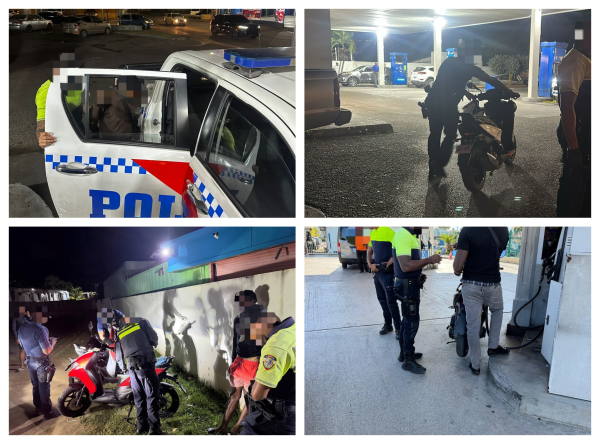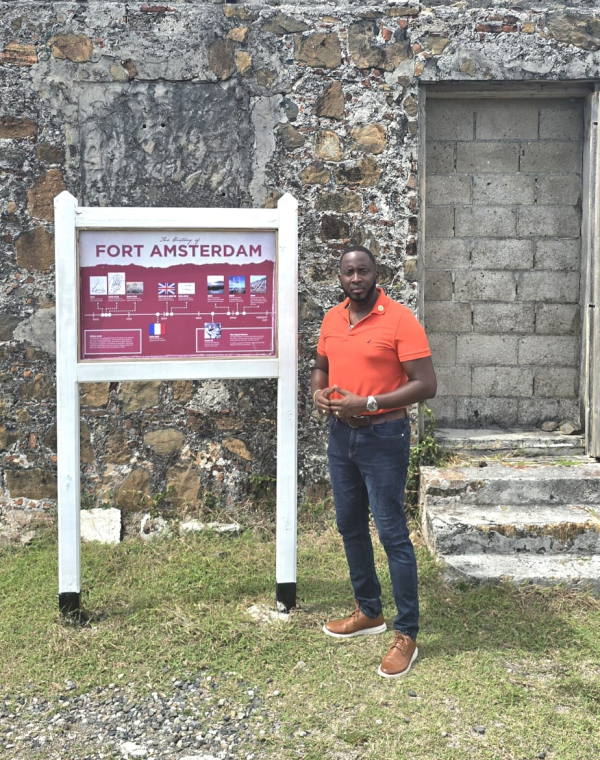 PHILIPSBURG: --- The Police Force of Sint Maarten (KPSM) has concluded a week of intelligence-led operations, resulting in multiple arrests, the recovery of stolen vehicles, and a clampdown on traffic violations. The targeted actions, which ran from December 29, 2024, to January 5, 2025, were part of the force's ongoing efforts to enhance public safety and maintain order across the territory.
PHILIPSBURG: --- The Police Force of Sint Maarten (KPSM) has concluded a week of intelligence-led operations, resulting in multiple arrests, the recovery of stolen vehicles, and a clampdown on traffic violations. The targeted actions, which ran from December 29, 2024, to January 5, 2025, were part of the force's ongoing efforts to enhance public safety and maintain order across the territory.
Strategic Deployment at Known Hotspots
Using intelligence gathered over recent months, KPSM officers adjusted their deployment strategies to focus on known hotspots. This data-driven approach allowed focused surveillance and preventive searches aimed at disrupting criminal activity. Throughout the week, officers conducted 17 vehicle inspections and subjected 75 individuals to preventive searches under the Weapons Ordinance to ensure public safety.
Notable Incidents and Arrests
Several key incidents marked the week's operations. In one case, an individual was arrested at a hotspot for non-compliance and verbal assault. The suspect repeatedly refused to provide identification to officers and became verbally abusive. After resisting arrest, the individual was subdued and taken to the police station.
In another significant action, officers recovered a stolen Hyundai H-100 pickup truck. During a preventive search, police noted that the vehicle's ignition had been forced. A check confirmed the truck was reported stolen from the French side of the island. The driver was arrested on suspicion of possessing stolen property, and the vehicle was seized.
A second stolen vehicle, a Suzuki APV van, was also recovered. Officers observed the van driving suspiciously and signaled it to stop. The driver, identified as known suspect D.N., fled the scene. The abandoned vehicle was later located, and a check with Central Dispatch confirmed it was stolen. The rightful owner was contacted, and the van was returned.
Focus on Traffic Enforcement
KPSM also took firm action against traffic violators, with a particular focus on scooter documentation and license plate visibility. Officers impounded 13 scooters whose operators could not produce valid ownership or insurance documents. It was noted that several of these operators had previously retrieved their impounded vehicles without regularizing their paperwork, leading to their scooters being impounded a second time.
Additionally, two drivers were arrested for document forgery after they were found using fraudulent insurance documents.
Police are also reminding the public about license plate regulations. Officers will continue to conduct controls on vehicles with license plates obscured by dark plastic coverings or other materials. These coverings, which make vehicle identification difficult, are illegal. Drivers found in violation will be instructed to remove the covers and may face further enforcement action.
A Continued Commitment to Safety
The week-long operation yielded four total arrests, the recovery of two stolen vehicles, and the impounding of 13 scooters. The KPSM emphasized that these targeted actions are not a one-time event but part of a sustained commitment to crime prevention, traffic safety, and the enforcement of the law throughout Sint Maarten. The public can expect these operations to continue as the police force works to ensure a safe environment for all residents and visitors.
 Simpson Bay, St. Maarten:--- The Sint Maarten Marine Trades Association (SMMTA), in collaboration with the Simpson Bay Fireworks Association, is pleased to announce the return of Crew Year’s Eve, set to take place on Friday, January 9, 2026.
Simpson Bay, St. Maarten:--- The Sint Maarten Marine Trades Association (SMMTA), in collaboration with the Simpson Bay Fireworks Association, is pleased to announce the return of Crew Year’s Eve, set to take place on Friday, January 9, 2026.




 Willemstad/Philipsburg:--- The Centrale Bank van Curaçao en Sint Maarten (CBCS) has been informed of the passing of Mr. Hushang Ansary and expresses its condolences to his family. With respect to the ongoing proceedings, the CBCS remains committed to recovering the losses suffered by Ennia.
Willemstad/Philipsburg:--- The Centrale Bank van Curaçao en Sint Maarten (CBCS) has been informed of the passing of Mr. Hushang Ansary and expresses its condolences to his family. With respect to the ongoing proceedings, the CBCS remains committed to recovering the losses suffered by Ennia. PHILIPSBURG:--- Member of Parliament (MP) Lyndon Lewis is urging the Minister of Education, Culture, Youth and Sport, Melissa Gumbs, and Minister of Public Housing, Spatial Planning, Environment and Infrastructure, Patrice Gumbs, to ensure that Fort Amsterdam, one of Sint Maarten’s most important historical monuments, is included in any upgrading and beautification initiatives undertaken by their ministries.
PHILIPSBURG:--- Member of Parliament (MP) Lyndon Lewis is urging the Minister of Education, Culture, Youth and Sport, Melissa Gumbs, and Minister of Public Housing, Spatial Planning, Environment and Infrastructure, Patrice Gumbs, to ensure that Fort Amsterdam, one of Sint Maarten’s most important historical monuments, is included in any upgrading and beautification initiatives undertaken by their ministries. PHILIPSBURG: --- The Police Force of Sint Maarten (KPSM) has concluded a week of intelligence-led operations, resulting in multiple arrests, the recovery of stolen vehicles, and a clampdown on traffic violations. The targeted actions, which ran from December 29, 2024, to January 5, 2025, were part of the force's ongoing efforts to enhance public safety and maintain order across the territory.
PHILIPSBURG: --- The Police Force of Sint Maarten (KPSM) has concluded a week of intelligence-led operations, resulting in multiple arrests, the recovery of stolen vehicles, and a clampdown on traffic violations. The targeted actions, which ran from December 29, 2024, to January 5, 2025, were part of the force's ongoing efforts to enhance public safety and maintain order across the territory.




